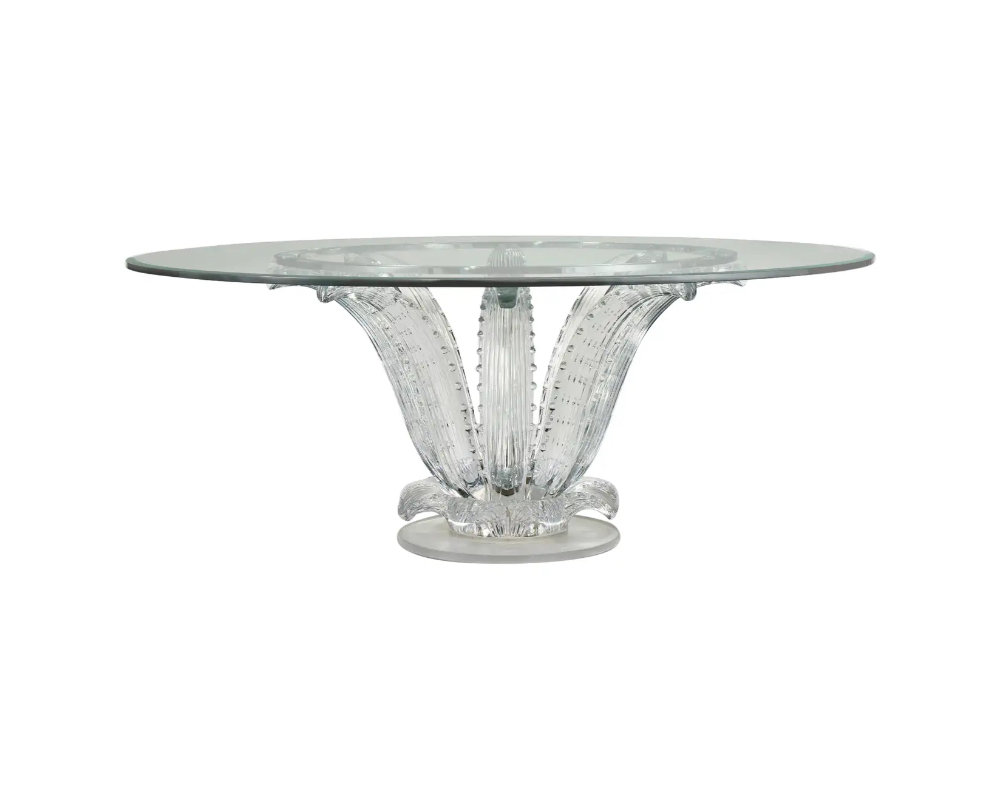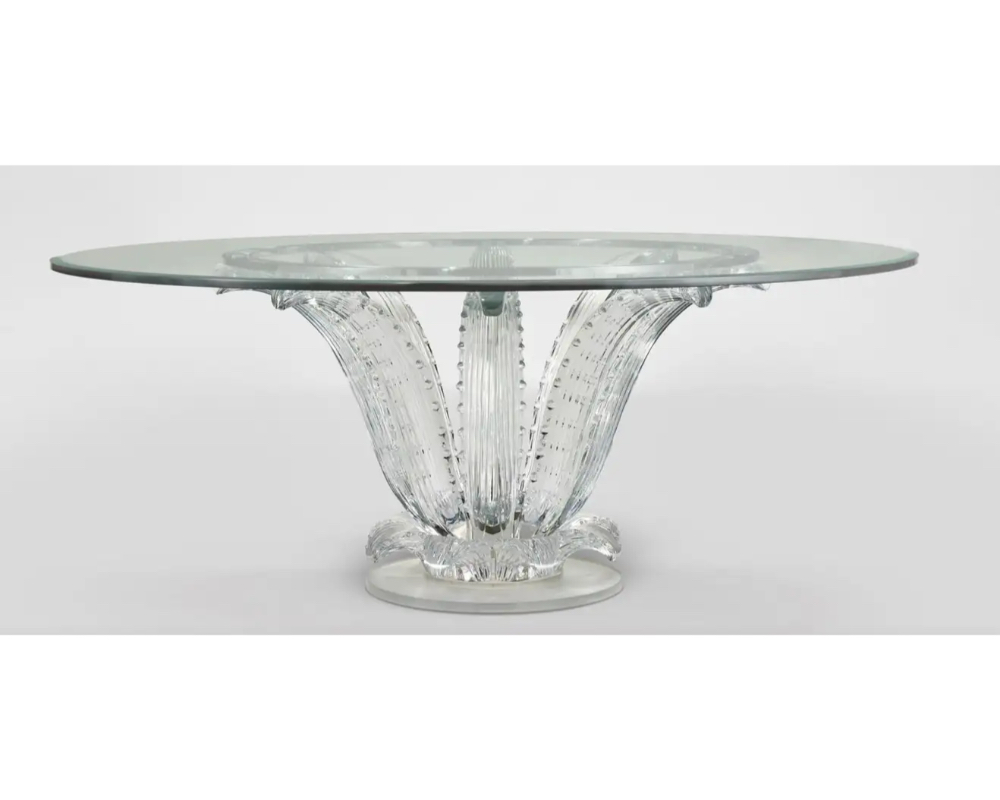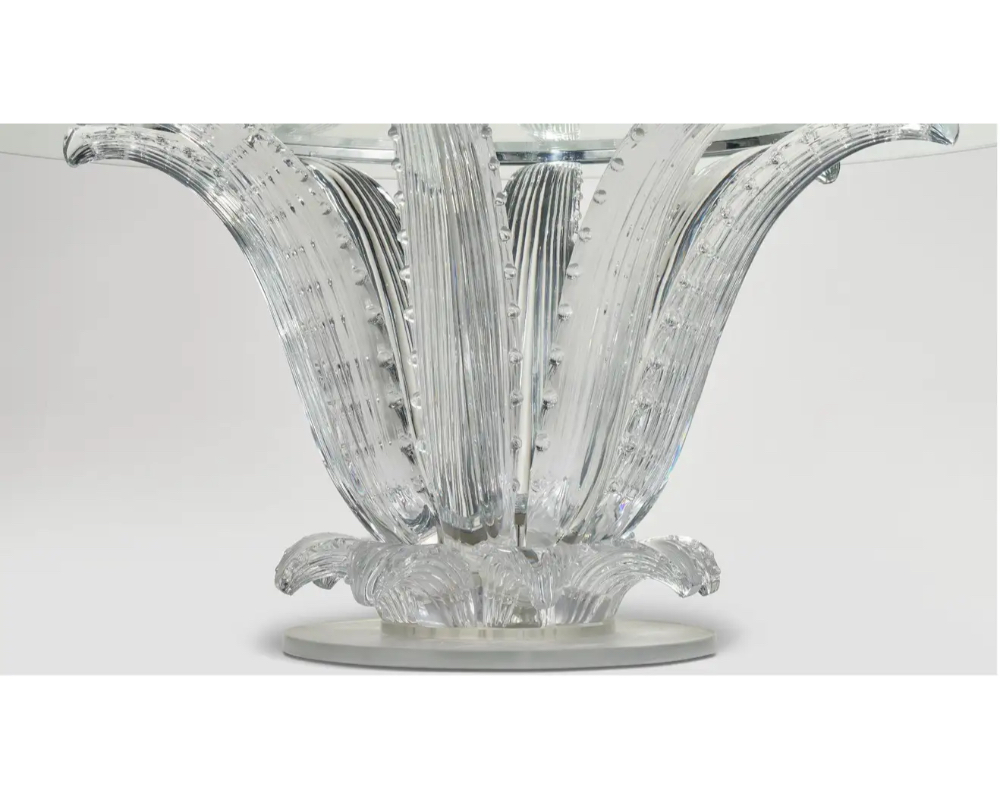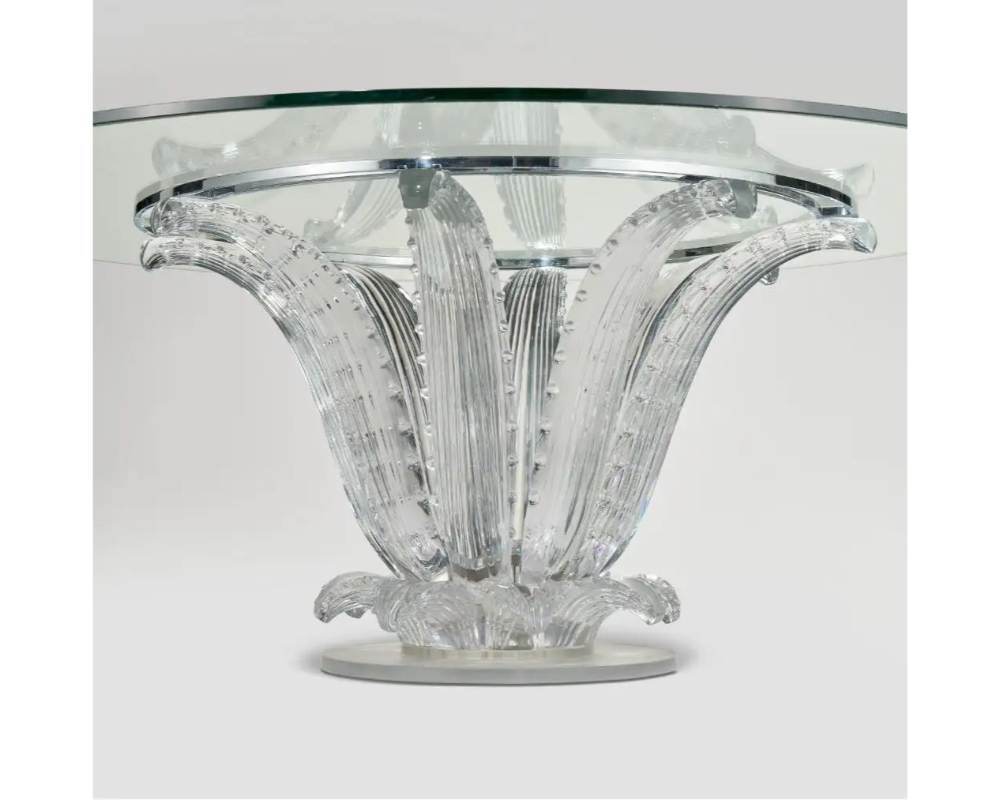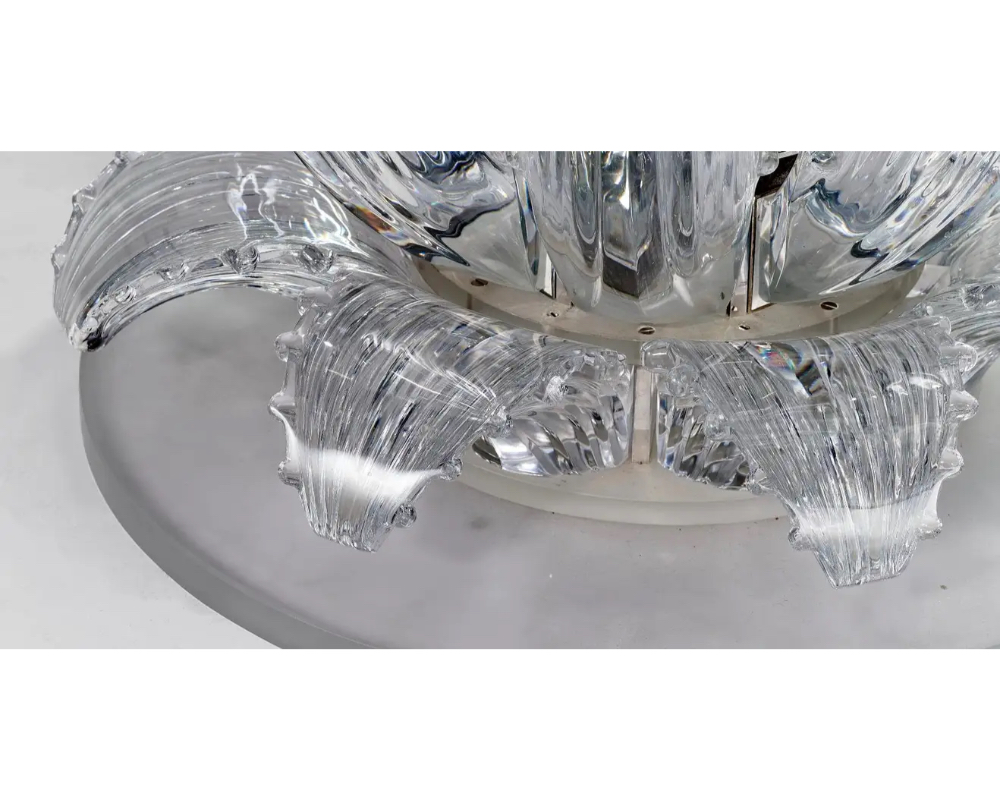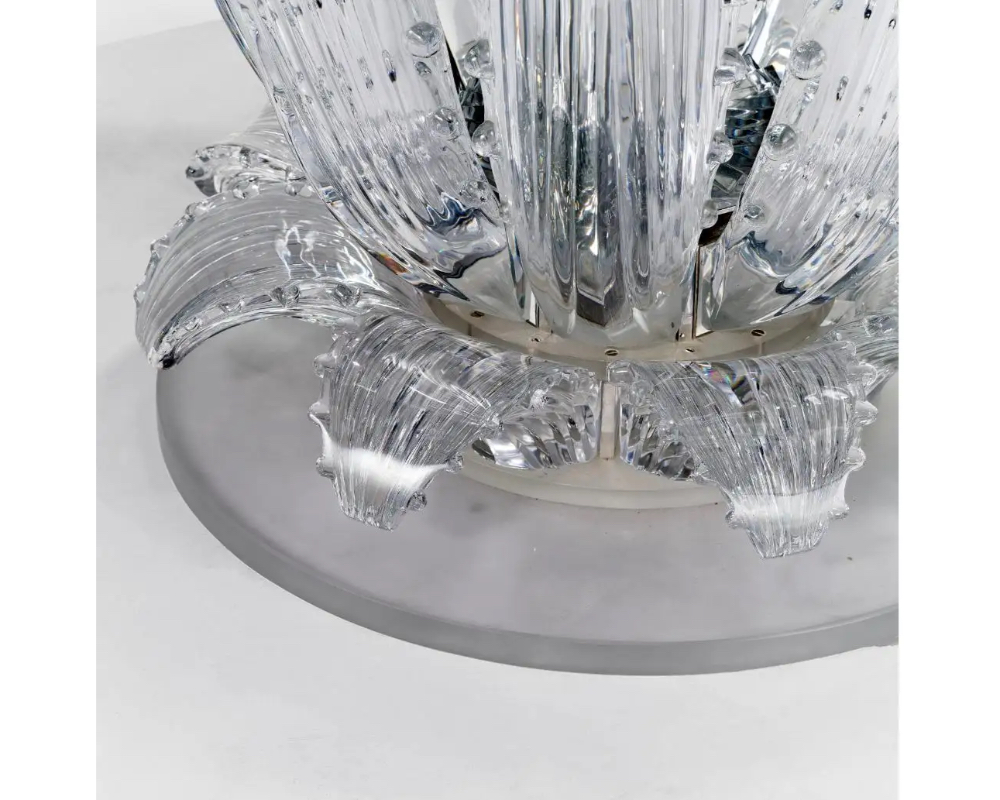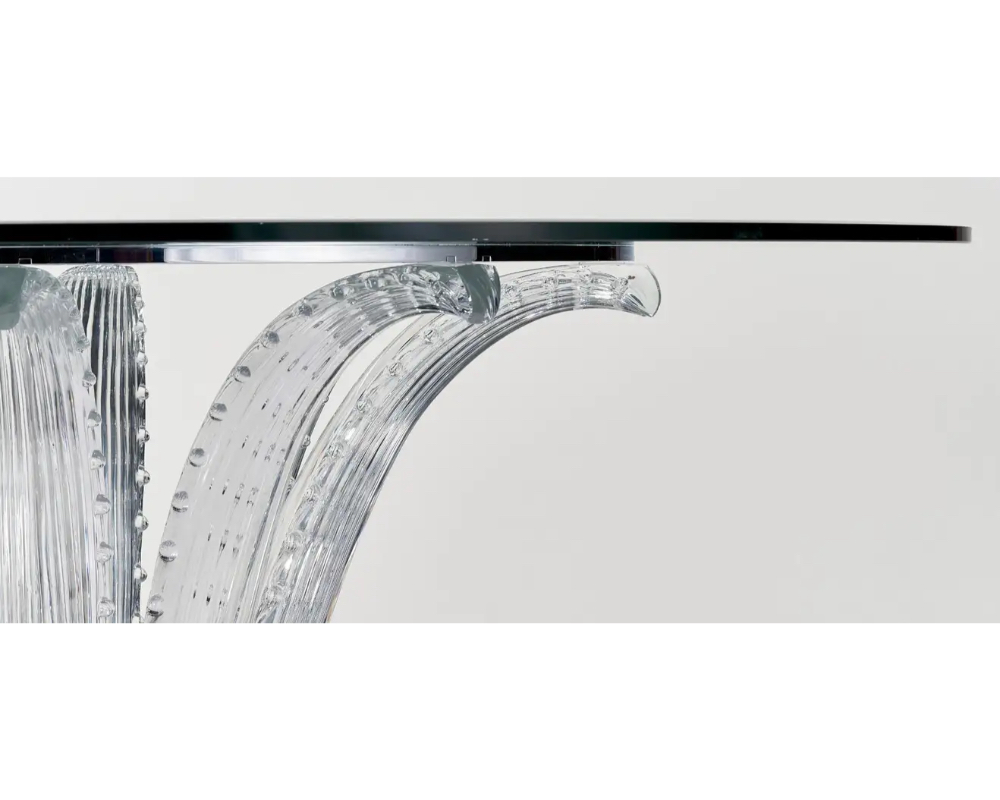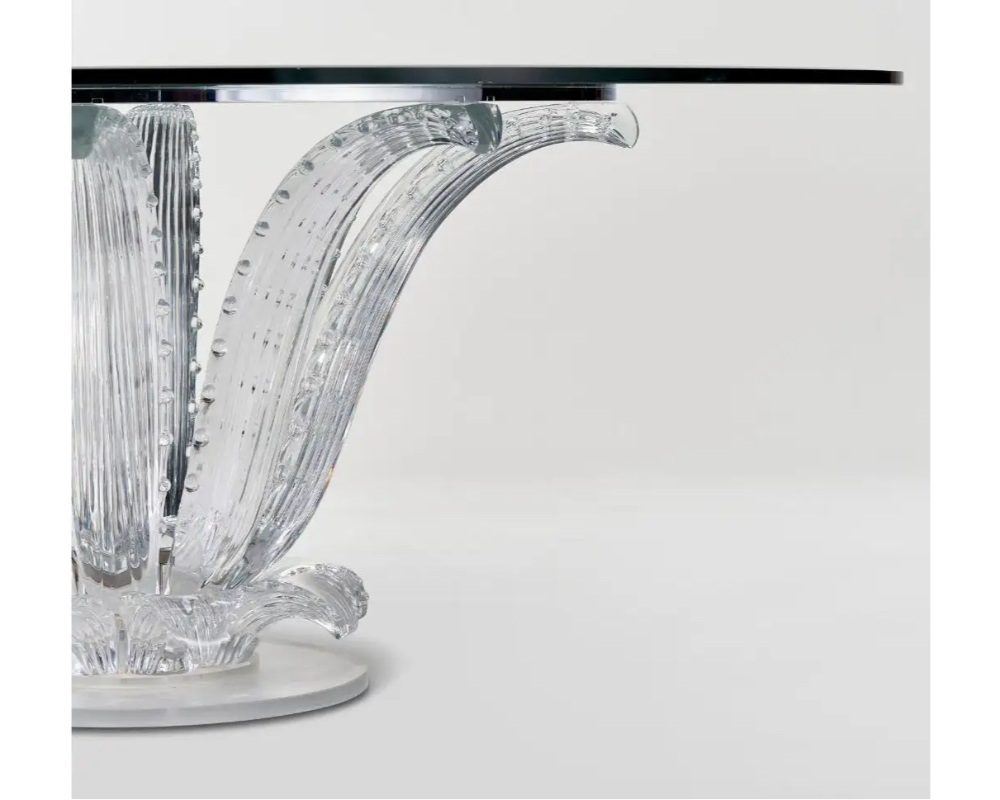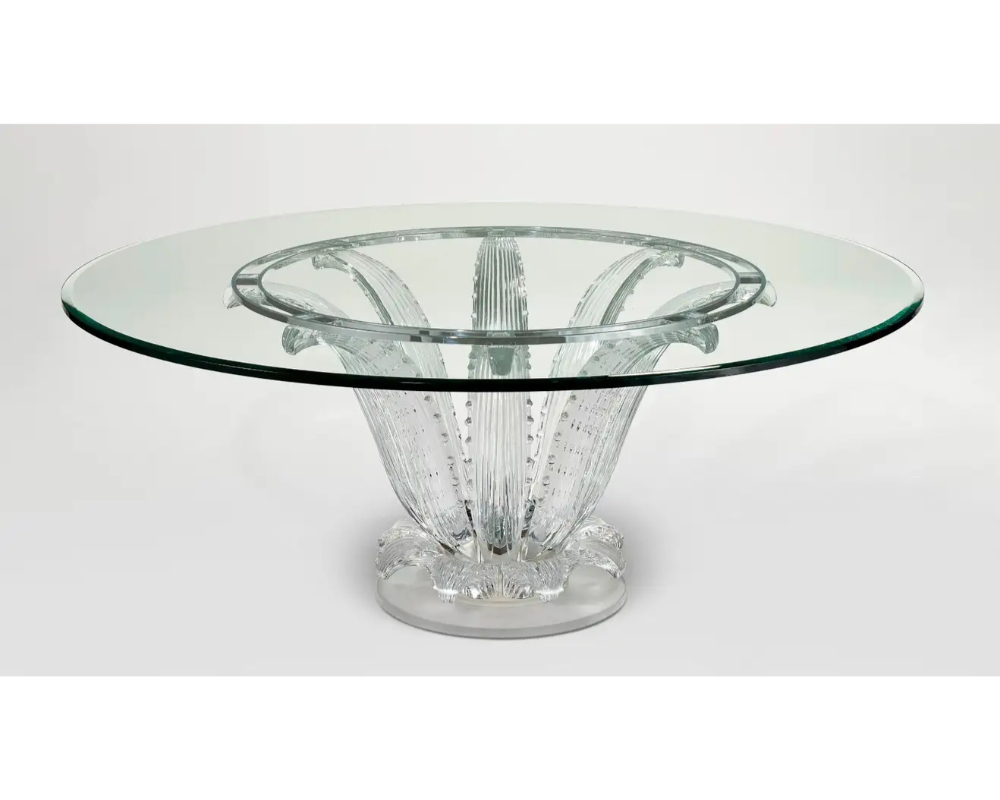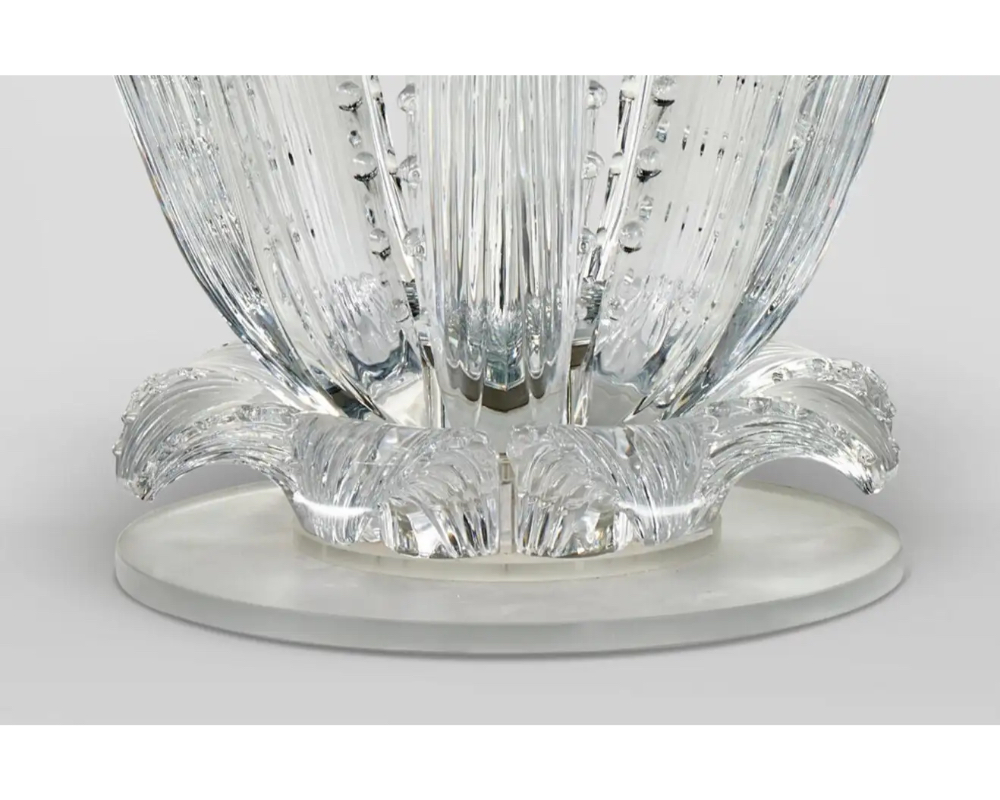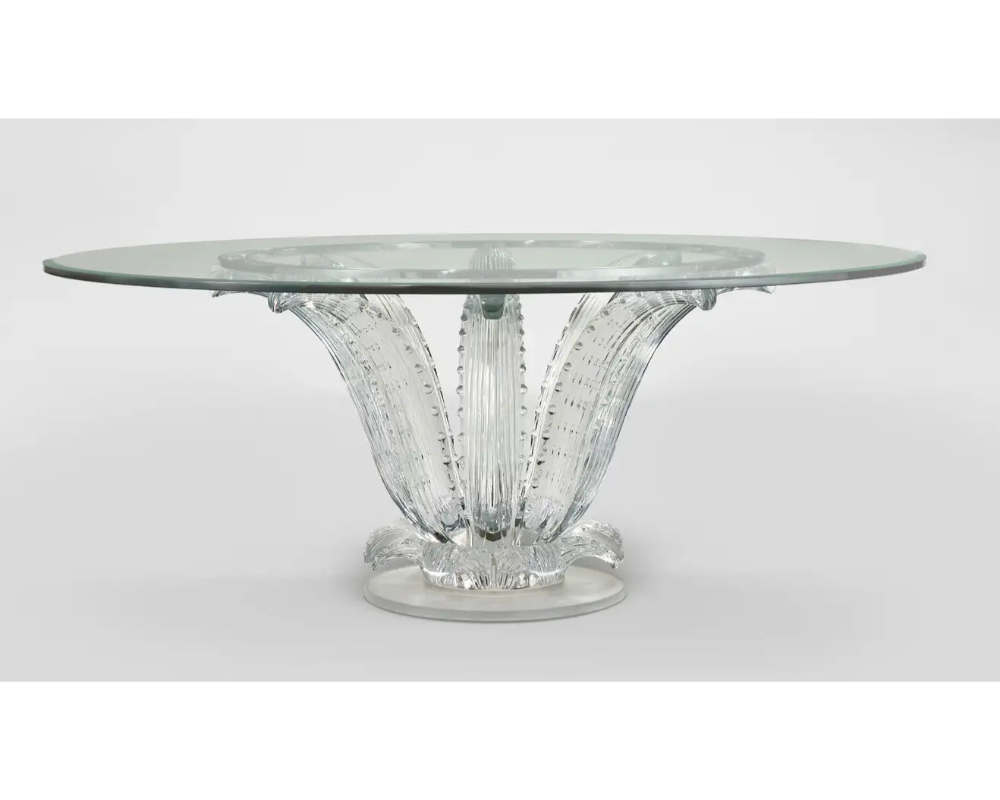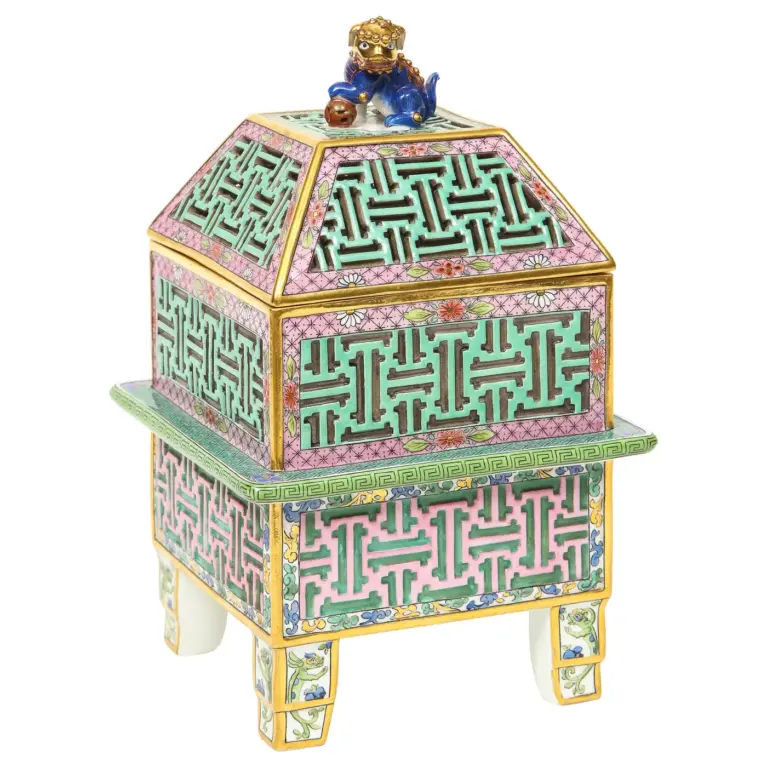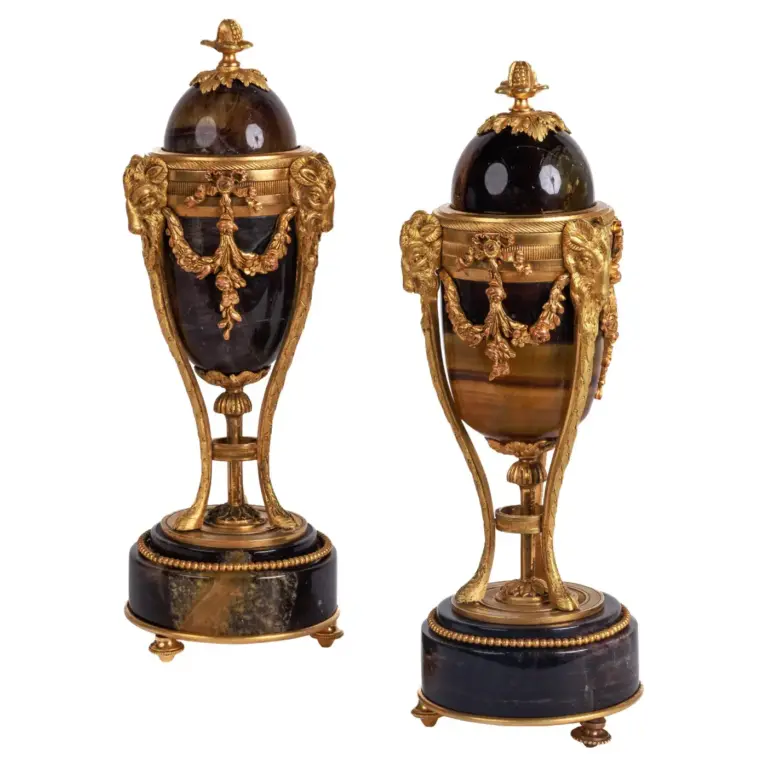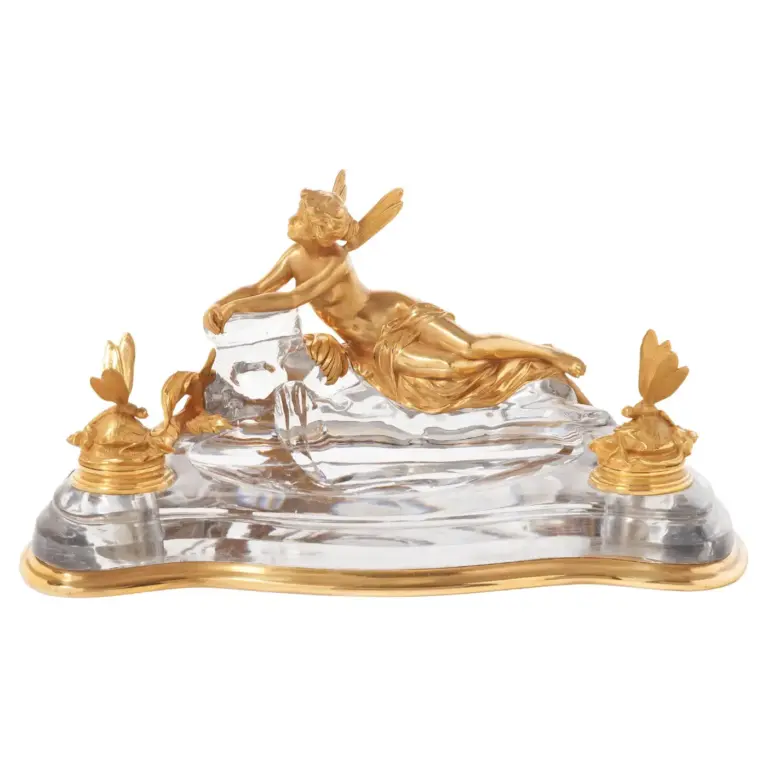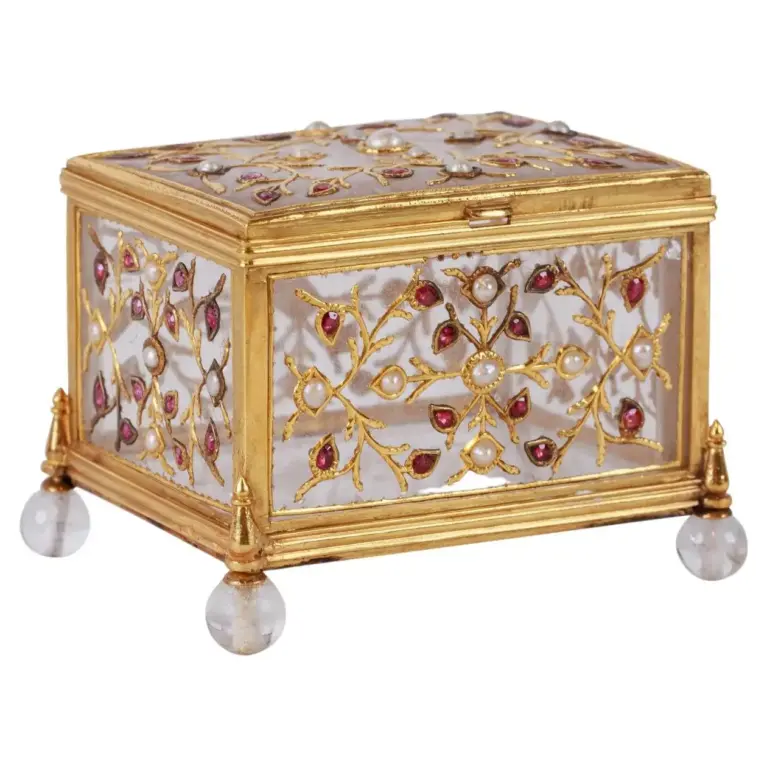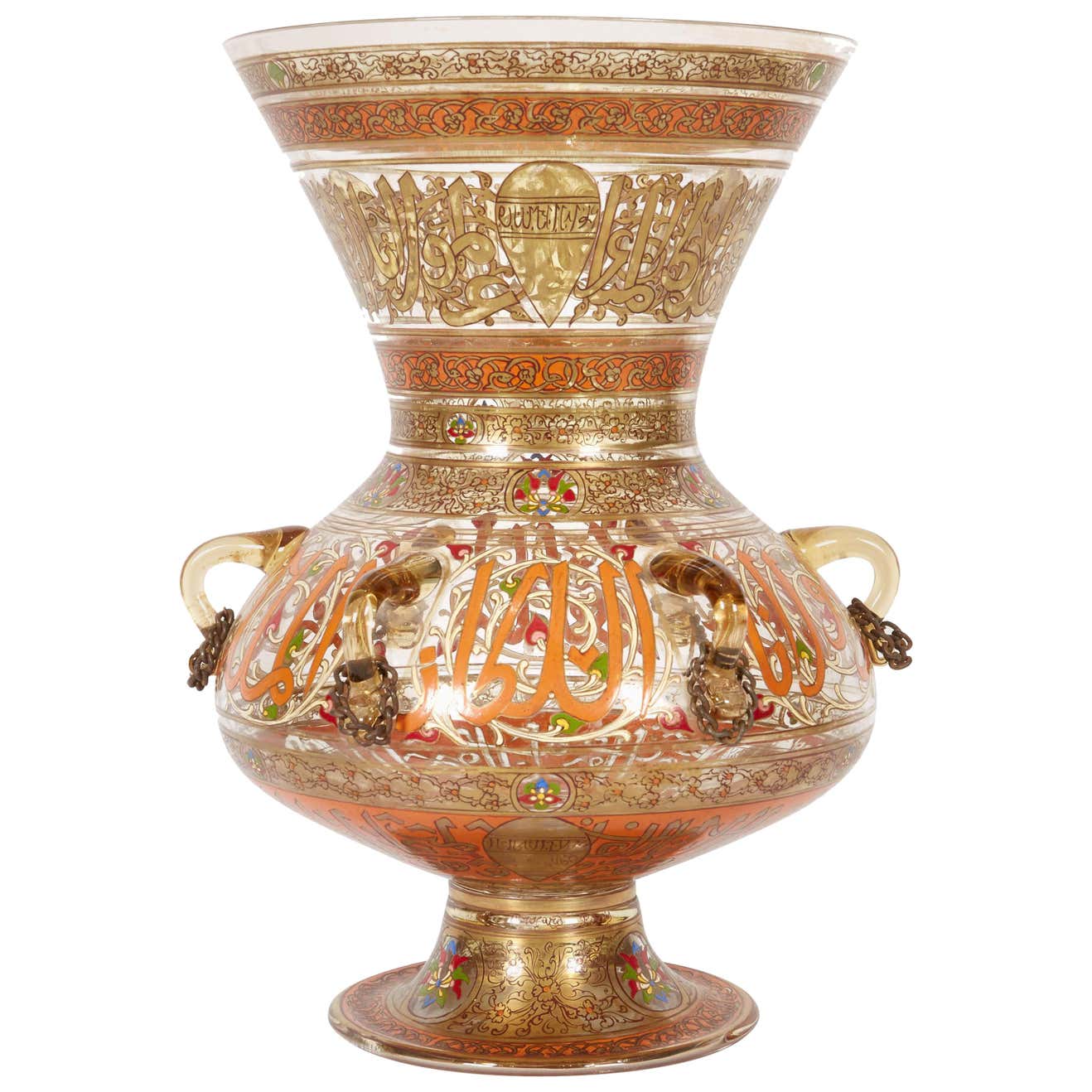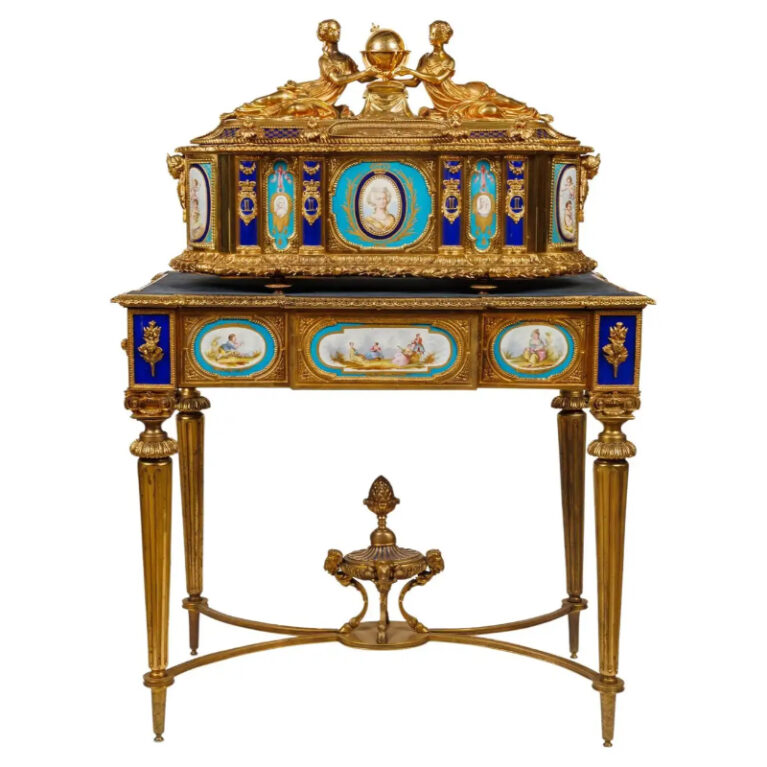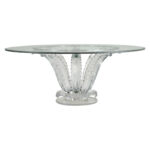Lalique France, A Magnificent and Large Crystal Cactus Table, 1990, 72″ Diameter
- Lalique France, A Magnificent and Large Crystal Cactus Table, circa 1990
- “An Exceptionally Elegant 72-inch Round Glass Dining / Center Table”
- This exquisite Lalique crystal cactus table is a true statement piece that exudes luxury and sophistication. Originally designed by Marc Lalique in 1951, this table was executed posthumously in early 1990s, showcasing the enduring legacy and the unparalleled artistry and craftsmanship of Lalique, a renowned French glassmaker.
Product Details
The table boasts a stunning cactus design, expertly crafted from high-quality crystal that captures the intricate details of the plant’s form and texture, featuring intricate and lifelike details that are sure to captivate the beholder. The table’s smooth surface reflects light in a mesmerizing way, creating a breathtaking display that is sure to impress.
With a diameter of 72 inches, this table is generously sized as one of the largest ever made, making it a perfect centerpiece for any room. It can comfortably seat several guests, making it ideal for entertaining and socializing.
Whether you’re a collector of Lalique pieces or simply a lover of fine art and design, this crystal cactus table is sure to leave a lasting impression. It’s a one-of-a-kind piece that adds an air of elegance and refinement to any space, and it’s destined to become a cherished family heirloom for generations to come.
27″ high x 72″ diameter engraved LALIQUE FRANCE
Please see our other listings for a rare pair of cactus console tables also by Lalique.
Very good condition. Light scratches. Presents very well and ready to place.
LITERATURE:
M.-C. Lalique, Lalique par Lalique, Florence, 1980, p. 238
N. Dawes, Lalique Glass, New York, 1986, p. 131
T. Hoving, Lalique: A Century of Glass for a Modern World, exh. cat., The Fashion Institute of Technology, New York, 1989, p. 75
J.-M. Charbonnier, “Lalique,” Beaux Arts Magazine, Paris, 1991, p. 47.
About:
Lalique is a beacon of French opulence in glassmaking and decorative arts, an enduring brand with a history spanning over 130 years and at least three movements in art and design: Art Nouveau, Art Deco and modernism. The firm’s founder, René Lalique, is a celebrated figure in Art Nouveau jewelry, which drew on feminine forms and natural-world themes. Under his masterful leadership, Lalique came to be known for its gorgeous vases, sculptures and glass and crystal serveware.
Rene Laliqué was born in 1860 in Aÿ-en-Champagne, France. As a young man, he apprenticed under Parisian Art Nouveau jeweler Louis Aucoc and studied at L’École nationale supérieure des Arts Décoratifs. Lalique’s skill and esteem broadened, and he created jewelry for renowned houses like Cartier and Boucheron. He took over a workshop in Paris in 1885 and opened his own business soon afterward. Not one to follow trends, Lalique gained popularity for his innovative accessories, which merged glass, enamel and ivory — materials that were uncommon in jewelry-making — with semi-precious stones and metals. Lalique’s work gained greater prominence at the 1900 Paris Exhibition, which served as a showcase for his extraordinary designs.
In 1907, Lalique began a revolutionary partnership with French perfumer François Coty. He designed a line of molded glass perfume bottles with frosted surfaces and patterned reliefs. Lalique opened his eponymous glassworks in Combs-La-Ville, Paris, in 1909. His attractive bottles and other pieces were shown at the International Exhibition of Modern Decorative and Industrial Arts in 1925 — the event that brought Art Deco to worldwide attention — catapulting Lalique to new levels of fame. Shortly afterward, in 1927, he created one of his most iconic pieces: the Bacchantes vase. A marvel of glassmaking that convincingly depicted movement, the vase displays his technical skills and artistry.
Lalique began receiving high-profile commissions — in 1929, he decorated the luxurious Côte d’Azur Pullman Express carriages, and in 1935, he designed lighting for the Grand Salon and dining room on the ocean liner SS Normandie.
Lalique died in 1945, and the reins at the company were passed to his son, Marc Lalique. The firm continued to produce its signature glass pieces as well as crystal vases, decor and serveware. Marc’s daughter, Marie-Claude Lalique, became CEO in 1977. She renewed the traditional jewelry and fragrance side of the business. In 2008, Lalique was acquired by Art & Fragrance, now known as Lalique Group. It remains a well-regarded lifestyle brand underpinned by a rich history in glassmaking.

| Period: | 20th Century |
| Origin: | France |
| Style: | Napoleon III (Of the Period) |
| Diameter: | 72 in (182.88 cm) |
| Height: | 27 in (68.58 cm) |
Creator:| Lalique (Maker) | |
| Date of Manufacture: | circa 1990 |
| Materials & Techniques: | Crystal,Metal |

